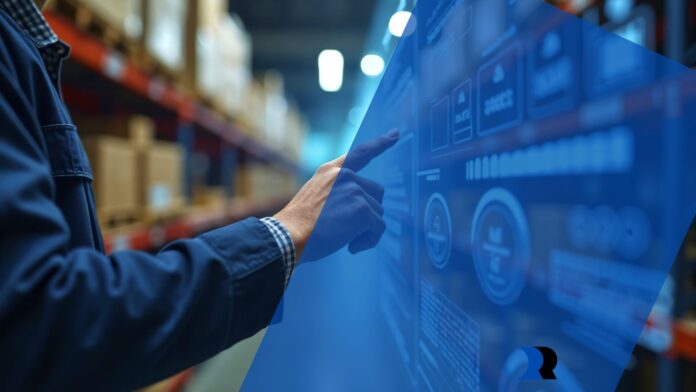Supply chains aren’t what they used to be. Sounds like something your grandma would say with a sigh, but it’s true.
Businesses are dealing with constant disruption, worker shortages, and customers who expect everything faster, cheaper, and more personalized. To keep up, supply chain leaders are leaning hard on AI. And one of the biggest changes you’ll see is the rise of the AI warehouse.
No, this isn’t a sci-fi set full of robots. It’s a quiet change happening in the background, where AI is helping supply chains get smarter, faster, and tougher.
Here’s how that shift is changing the way supply chains work.
What Makes an AI Warehouse So Different?
In a typical warehouse, people and machines follow set rules. The system relies on old forecasts and fixed routines. Not exactly built for surprises.
An AI warehouse works differently. It learns, adapts, and responds in real time. AI looks at thousands of signals at once—things like weather shifts, customer demand, supplier delays, or port closures. Then it adjusts. Stock levels change automatically, deliveries get rerouted, and energy usage gets optimized without anyone lifting a finger.
According to McKinsey, this kind of setup can reduce warehouse costs by up to 40% and increase output without adding headcount.
And it’s no longer just for the Amazons of the world. With cloud-based AI tools, mid-size companies can get in on it too.
AI Thinks Ahead, Not Just Faster
The real value of AI goes beyond automation. It helps teams make smarter decisions in less time.
Modern AI tools act like silent problem-solvers in the background. They run thousands of scenarios, spot issues early, and suggest the best path forward before most people even notice something’s off.
Old systems tend to freeze when things change. AI keeps going, adjusting in real time and keeping operations steady. That shift is what makes it such a big deal.
Beyond the Warehouse Walls
The impact of AI doesn’t stop at the warehouse door. It’s quietly syncing up the entire supply chain, from raw materials to final delivery.
- In procurement, AI reviews supplier data, price shifts, and risk signals that would take teams days or weeks to sort through manually. Companies can integrate this AI capability with their existing vendor management software to automate supplier performance tracking and contract compliance monitoring across their entire vendor network. It spots patterns people might miss until it’s too late.
- In transportation, it adjusts routes in real time based on traffic, fuel prices, or unexpected delays. Drivers stay on time, and costs stay in check.
- In demand planning, it responds to changes as they happen, helping companies avoid the mess of overstock or empty shelves.
This kind of behind-the-scenes intelligence keeps the whole system moving, even when things don’t go as planned.

Why AI in Supply Chains Often Goes Unnoticed
This shift doesn’t grab headlines. There are no flashy launches or viral demos, but don’t let the quiet fool you.
IBM reports that 61% of executives say AI is already adding value to their supply chains. Gartner predicts that by 2026, 75% of large companies will be using AI-driven supply chain solutions.
The silence doesn’t mean nothing is happening. It shows that the smartest companies have moved past the talk and are focused on making AI work for them.
Final Thought: Silent but Unstoppable
The rise of the AI warehouse is just one part of a much bigger change. AI is working its way through forecasting, fulfillment, logistics, and procurement. It’s a real reset in how supply chains run and how value gets created.
Companies that move with this change now will bounce back faster from uncertainty and build supply chains that are smarter, stronger, and ready for whatever comes next.


